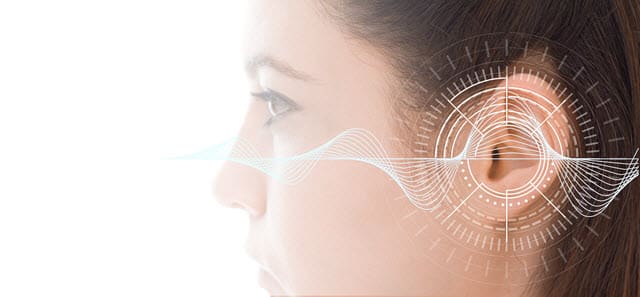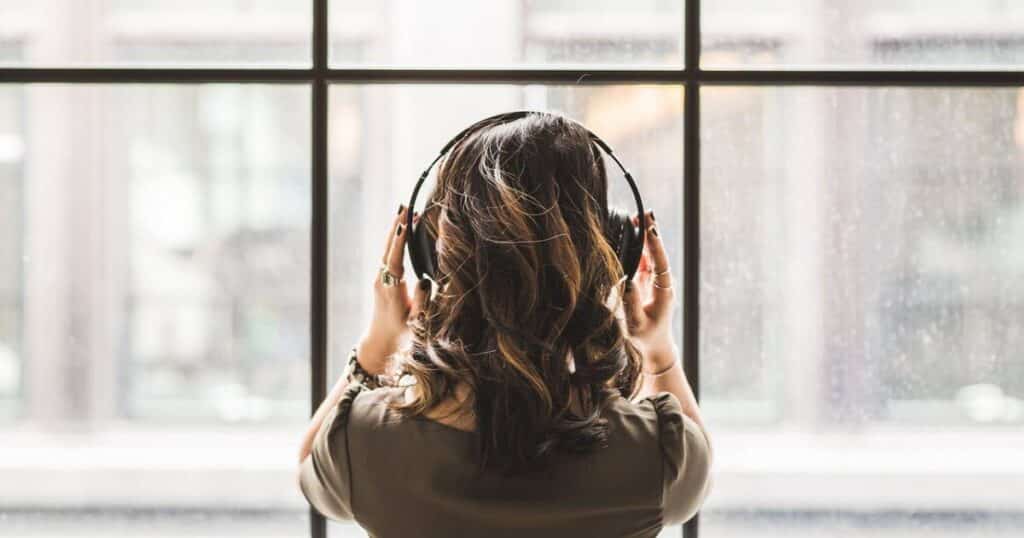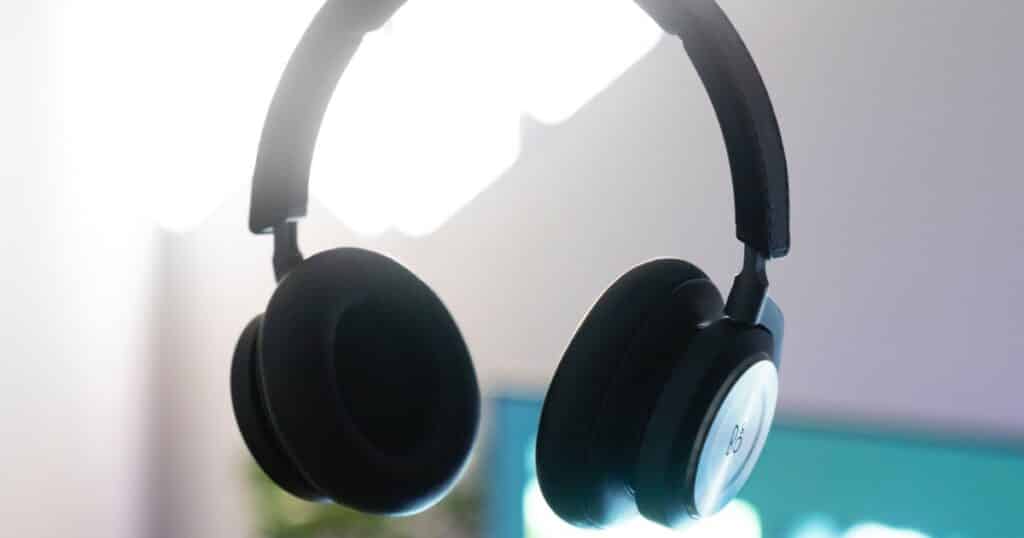Everyone has a pair of headphones that they hold near and dear. They help us find a way to cut off from the world for a while. However, with regular headphones, we can still hear what’s happening around us, especially if the sound is very loud. To combat that, noise cancelling headphones are now available to consumers, and they work more effectively to keep out distracting sounds. But how do noise cancelling headphones work to block out the ambient sounds of our environment?
Noise canceling headphones have become a bit of a buzzword. People want to use this type of listening device while working from home to avoid the sounds that could distract them, at the gym to listen to their music, or to avoid listening to the sounds of the city while commuting so they can enjoy a bit of peace during daily transit.
We all just want to listen to our favorite music, audiobook, or podcast in peace and without the disruption caused by the outside world.
In this article, I’ll explain how noise cancelling headphones work, and the differences between some common types of headphones marketed as noise cancelling. I’ll explain the different ways these headphones block out sound and the different uses they’re designed for so you can choose the best type of noise cancelling headphones for how you live.
Let’s start with a short, concise summary:
So, How do Noise Cancelling Headphones Work?
While most headphones you buy provide some baseline noise cancellation passively, active noise cancellation (ANC) technology (invented in the 1980s by Amar Bose) works by disrupting background sounds – specifically low-frequency sound waves. These low-frequency sounds are not disrupted simply by covering your ears with a set of headphones. Noise cancelling headphones with active noise cancellation produce a low-frequency sound wave which mimics and cancels out incoming low frequency sound waves from your environment through destructive interference.

This isn’t as complicated as it sounds. Let’s dig in and get a little more specific about how this all works so it’s easier to understand.
Passive vs Active Noise Cancellation
There are two types of noise cancellation:
- Active noise cancellation
- Passive noise cancellation
Most headphones already provide a very basic level of passive noise cancellation. This is because it does in some way muffle the sounds outside of the headphones by forming a seal over the ear. However, it’s not as effective as active noise headphones.
The structure of normal headphones helps block out most loud, high-frequency sounds without completely making it quiet. Low-frequency sounds are still able to come through.
Active noise cancellation technology was invented in the 1980s by Bose, who are well-known for producing high-quality loudspeakers. This technology was invented for the US military to protect their pilots from the loud noises during flight. Bose’s founder, Amar Bose, found that hearing loss in pilots was one of the most common reasons for them to retire early. This was the second-highest reason for early retirement, behind only the psychological stress of their work. So, he set out to find a way to help protect ears from hearing loss caused by working in loud environments.
Active Noise Cancellation in Headphones
The active noise cancellation (ANC) technology works by disrupting background sounds by “canceling” them out. Remember the low-frequency sounds we talked about earlier? ANC technology actively erases lower-frequency sound waves. The keyword here for all of us is “active”.

Headphones with this technology actively create a low-frequency sound wave, often mimicking the same sound to cancel out the incoming sound waves. This is done by delaying the sound wave created by the headphones. This uses the technique called destructive interference. Essentially there are two opposite sound waves that when combined end up canceling each other out.
Components of a Noise Cancelling Headphone
To understand the technology, let’s look at the components of noise cancelling headphones to better understand how they work:
- Microphone: This component helps the device hear or detect the low-frequency sounds that need to be canceled out. It specifically listens for sounds that are not blocked passively. It is normally situated in the ear cups of the headphones, so it picks up sounds that your ears will pick up.
- Noise-canceling circuitry: With the input of sound, the device now needs to process that sound. It is the noise-canceling circuitry’s turn to sense the sound and create a copy of it. What it does is that it creates a sound wave that is similar to the frequency and amplitude of the incoming wave. It then lets the wave out by delaying it slightly, so that it creates a wave that is out of phase with the incoming sound waves.
- Speaker: The phase wave is now passed onto the speaker. This is the same speaker that sends you the normal audio, but it also sends out the out of phase sound waves to hit the unwanted sound waves, disrupting them and effectively cancelling them out so you only hear what you want. This way you can enjoy your music, audiobook or podcast, or whatever you are listening to without interference from sounds in your surrounding environment.
- Battery: To do all this requires energy. This is why all active noise-canceling headphones will come with a rechargeable battery. This is unlike old, normal headphones that are plug and play. To perform the task of listening for unwanted sounds, creating a copy, and putting it out, your ANC headphones will need regular charging.
The Science Behind Noise Cancellation
You probably already know that we can hear sounds through waves that come from vibrations. It is caused by the compression and decompression of the particles in a medium in which the sound is passing through.

Picture a wave.
Waves consist of crests and troughs, and this includes sound waves. A wavelength is essentially the distance between the first crest and the second or the first trough and the second. Either way, it is going to be the same. Amplitude is the distance between the trough or crest from the equilibrium.
Now, imagine the crests or the peaks of a wave having an amplitude of +1. Troughs or the low points of the wave have the amplitude -1. Now with this, we make a sequence +1, -1, +1, -1 to represent a wave. With +1 and -1 being half a wavelength apart.
When two sound waves with the same amplitude and wavelength come together, it becomes louder. Now go back to the sequence we just made, +1, -1, +1, -1. If two waves of this sequence come together, it becomes +2,-2,+2,-2.
Noise-canceling headphones read the sequence +1,-1,+1,-1 and creates an identical version with a delay. Essentially it now delays it by half a wavelength. So, it sends out the sequence -1, +1, -1, +1. When this is added to the noise sequence of the sound that your headphones are blocking, the sequence becomes 0,0,0,0, essentially: no noise.
This is called destructive interference, and this is how noise cancellation works.
Pros of Active Noise Cancelling Headphones
Noise cancelling headphones aren’t for everyone, but there are distinct advantages to choosing this type of headphone.

These advantages include:
Provides Hearing Protection
Imagine working in an environment that is constantly loud. Not only is a loud environment disruptive to your focus, but it can also damage your hearing. Coupling that, it also can create stress. Loud noise is not healthy. So, your ANC headphones can protect you.
No Need to Increase the Volume
Active noise-cancelling headphones are great because you don’t have to increase the volume to drown out the outside noise. This means that you do not have to listen to really loud music that could affect your hearing in the long run – another way these headphones help to protect your ears.
Helps Concentration
When your noise-canceling headphones are on, they help a great deal because you are now no longer going to be distracted by extra sounds. It limits the external stimulus so that you can respond to what is necessary. Students, people working at home during work hours, people working out in the gym … they all require focus to perform at their best. People can now focus on their calls better than before and have a better listening experience.
Toggleable Cancellation
Many new noise canceling headphones provide the option of turning the option on or off. Essentially, you can control when the headphones should actively cancel noise. Some can even help out with the level of noise cancellation you want. This is extremely practical because sometimes you do not want to completely block out what’s going on in your surroundings. For example, you may want to keep an ear out for the announcement for the next station while listening to music on the subway or train. Alternatively, in the gym, you don’t want to listen to the loud music of the speakers and prefer your own workout mix. In this case you’d turn noise cancellation on.
Cons of Active Noise Cancelling Headphones
Are there drawbacks of ANC Headphones? You bet – let’s run through them briefly:

Needs Power
Your noise canceling headphones will consume more power because of the work they do. So, you need to consider your use outside of your home and how close you are to charging ports before investing in them.
It Can Get Heavy
The components of the noise-canceling headphones require more structure. This structure then creates bulk. This means that your noise cancelling headphones are going to be heavier than standard headphones.
Cost
Of course, like all good things, noise canceling headphones can get expensive. With the additional features that the gadget provides, it’s no wonder it is going to be heavy on the pockets.
How Do Noise Cancelling Headphones Work? Great!
In summary, active noise canceling headphones help you enjoy whatever you are listening to with your headphones, and they can help protect your hearing as well.
They protect you by actively listening for low-frequency sounds, creating a copy of the low-frequency sound to disrupt and cancel those soundwaves so you never hear it. This zeroing out actively works to provide you with peace and protect your hearing … not only blocking loud background noises, but allowing you to listen to your music at a lower volume.

They can also provide you with stress-free alone time in those busy times of day when you may be overwhelmed by stimulus. Transforming a hectic commute on public transportation into a time of peace can be transformative.
The drawbacks are limited to design, power consumption, and cost. If these concerns aren’t a big deal for you, noise canceling headphones are a great choice for many people.




